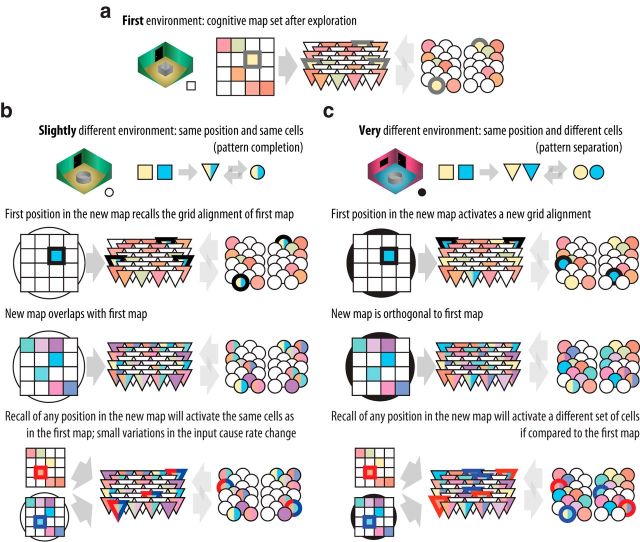Figure 11.
Mechanisms of rate and global remapping. Illustrations as Figure 10. a, For a first environment, after exploration the cognitive map is set as described in Figure 10. b, In a new and slightly different environment, sensory inputs for the same position are similar and encoded by the same cells (pattern completion). Once the animal is in this new environment, the same place and grid cells are activated as in the first environment. The construction of the map will follow the procedure described in Figure 10, leading to overlapping maps. Once both maps as established, the same set of place and grid cells will be active at the same position regardless of the environment. In this case, rate remapping will be observed since small variations of sensory inputs are reflected in the spike rate of the place cells. c, In a new and very different environment, sensory inputs for the same position are different and encoded by different cells (pattern separation). Once the animal is in this new environment, a different set of place and grid cells is activated in relation to the first environment. The construction of the map will follow the procedure described in Figure 10, leading to orthogonal maps. Once both maps are established, different sets of place and grid cells will be active depending on the environment. In this case, global remapping and grid realignment will be observed.

